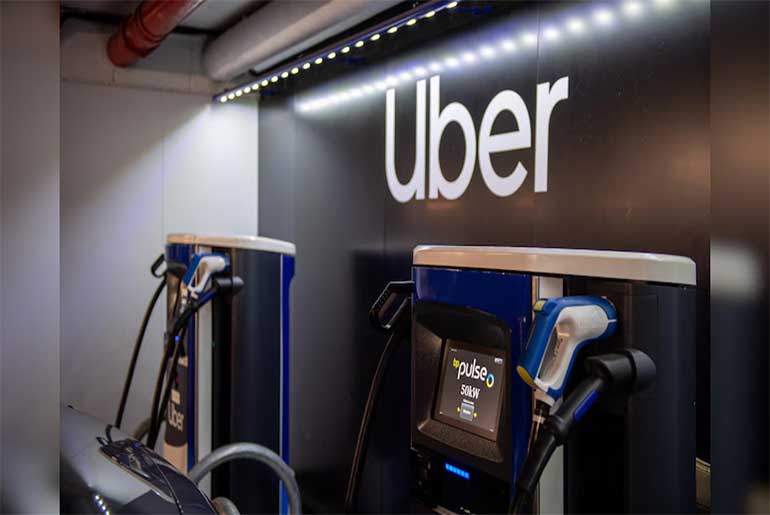At last, EVs are becoming affordable enough for the general public to adopt. Although the average cost of a new EV transaction has increased, used EVs are reaching a point where people, particularly gig drivers, are less concerned about the purchase price. Plugging in appears to be the only issue that folks still worry about.
Uber claims that the primary pain point is no longer the years of pricing worry that drove its drivers away from battery-electric vehicles. According to a recent survey of Uber drivers, the largest EV-related worry of those using the service is availability of chargers, and they’re not simply referring to public charging.
Only over one-third of Uber’s electric vehicle drivers in the United States now have access to home charging. That seems like a rather big gap, doesn’t it? particularly in light of the fact that most EV charging is carried out at home. Although it’s unclear how many of these are DC fast chargers and how many are open to the public without paywalls like paid parking garages, research indicates that 64% of Americans live within two miles of an EV charger.
When you purchase an EV but lack access to home charging, you can see how things can quickly become complicated. Imagine residing in an apartment, driving all day, and then being unable to plug in at home due to the impossibility of installing an EV charger.
Uber is making significant changes to address that issue. In reality, Rebecca Tinucci has been appointed to lead it. Last year, Tinucci was the leader of the Supercharging team that Tesla abruptly fired. Her new position at Uber? Clean up the mess as soon as possible.
In actuality, charging networks’ top clients are Uber drivers. Because they drive frequently and accumulate a lot of mileage through recurring patterns, it is rather predicted where they will drive, charge, and park.
According to Uber, there are currently 230,000 EV drivers using its platform globally, a startling 60% growth from the beginning of 2024. It is understandable why charging anxiety, rather than EV pricing, is currently the top concern.
It is also aware that infrastructure investment will be successful. Approximately three years ago, Uber took a similar action. In a London area where many of its drivers resided, it spent $6.8 million (5 million GBP) burying almost 700 EV chargers. Compared to the national average, those chargers are now used twice as frequently.
With its current aim to expand globally, the ride-sharing platform anticipates having about 60% of the required coverage area under its control. In order to estimate the demand for EV chargers that its drivers require, Uber has already developed a program known as the Electric Vehicle Infrastructure Estimator.
The business is currently competing with robotaxis. Instead of investing in autonomy itself, Uber recently partnered with Waymo. However, since self-driving technology is still in its infancy, it must first support its current assets, which are the drivers that enable its service to operate.

